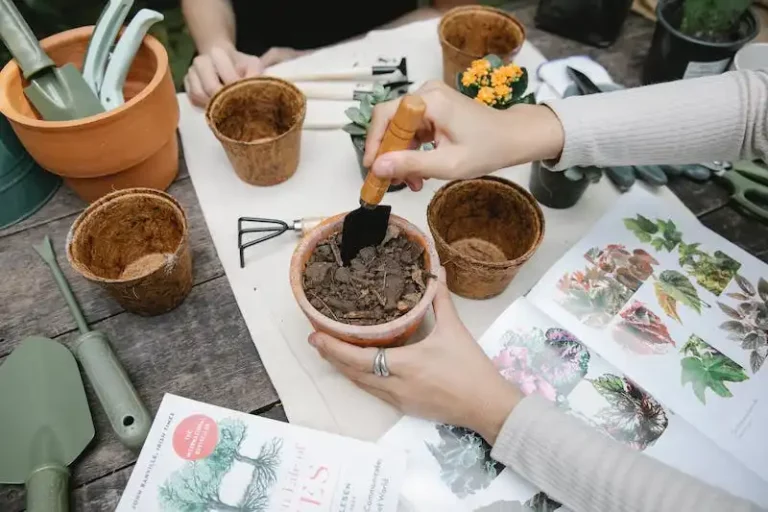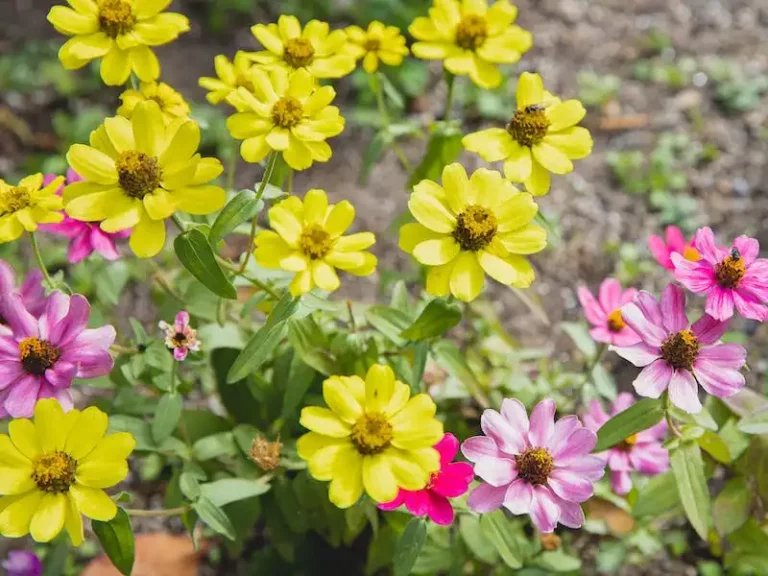The fenugreek plant, also known as Methi, is a member of the Fabaceae family. It is an annual herb that grows in lots of regions with warmer temperatures. Fenugreek is believed to have originated in the Middle East and Mediterranean areas, but it is now grown all over the world.
The fenugreek plant has small green leaves that are more similar to clover leaves in shape. The leaves are oval and, when crushed, have a strong aroma that is similar to maple syrup. The plant is also known for its seeds, which are used in herbal medicine, culinary preparations, and for their various health benefits.
If you’re interested in growing fenugreek, here are a few tips to keep in mind. The plant can be grown in the ground or in containers, but it prefers well-drained soil. Planting the seeds directly in the ground or a planter is the best way to grow fenugreek. Additional care, such as watering and fertilizing, is needed to ensure proper growth.
When it comes to harvesting fenugreek, you can either harvest the leaves or the seeds. The leaves can be harvested about three weeks after planting, while the seeds are ready to harvest when the plant starts to yellow and drop its leaves. Both parts of the plant can be used in cooking, and fenugreek is a popular ingredient in Indian cuisine.
Fenugreek is known for its many health benefits. According to Healthline, fenugreek can help regulate blood sugar levels, improve digestion, and increase breast milk production in lactating women. It is also rich in vitamins and minerals and is a good source of protein. Fenugreek seeds are often used as a spice, and they can add a delicious, slightly bitter flavor to dishes.
Overall, fenugreek is a versatile plant that can be grown and harvested by both experienced and novice gardeners. Whether you’re interested in its health benefits or its delicious flavor, fenugreek is definitely worth considering for your garden or kitchen.
How to Grow Fenugreek
Growing fenugreek plants is relatively easy and can be done from seeds. Fenugreek plants are popular for their nutritious leaves and seeds that are commonly used in cooking. Follow these steps to grow your own fenugreek plants:
- Select a well-drained container or a garden bed to grow fenugreek. Fenugreek plants can grow in a variety of soils, but they prefer sandy loam or loamy soil.
- Sow the fenugreek seeds directly into the soil or container. The seeds should be planted about 1/4 inch deep and spaced roughly 2 inches apart.
- Water the seeds thoroughly after planting. Fenugreek plants require regular watering, especially during the germination period.
- Fenugreek plants prefer full sun, so make sure they receive at least 6-8 hours of direct sunlight every day.
- When the seedlings are about 1-2 inches tall, thin them to about 4-6 inches apart to allow enough space for each plant to grow.
- Monitor the soil moisture regularly and water the plants whenever the top inch of the soil feels dry. Fenugreek plants do not tolerate dry spells well.
- Fertilize the plants with nitrogen-rich fertilizer every 2-4 weeks to promote healthy growth.
- Harvest the fenugreek leaves when they are 4-6 inches tall. You can either harvest the whole plant or pick the outer leaves as needed.
- If you wish to harvest fenugreek seeds, wait until the plants start to flower. The seed pods will turn yellow and dry, indicating that they are ready to be harvested.
- After harvesting, you can use fenugreek leaves and seeds in a variety of dishes. Fenugreek leaves add a unique flavor to curries, while the seeds are commonly used as a spice.
These tips can help you successfully grow fenugreek plants in your garden or container. With a little effort and care, you can enjoy fresh fenugreek leaves and seeds for years to come.
fenugreek
Fenugreek, also known as Trigonella foenum-graecum, is a plant that belongs to the legume family. It is an annual herb with trifoliate leaves and white flowers. The leaves and seeds of the fenugreek plant are commonly used in cooking and for their medicinal properties.
The leaves of the fenugreek plant have small spots on them and a slightly bitter taste. They can be used both fresh and dried in various recipes. The seeds, on the other hand, have an oval shape and are typically dried and roasted before use. They are commonly ground into a powder and used as a spice in many Indian dishes.
When it comes to growing fenugreek, it is a relatively easy plant to manage. Fenugreek plants prefer well-drained soil and should be watered regularly. However, it is important to avoid over-watering, as fenugreek plants are prone to diseases. The plant also thrives in warm climates and requires full sun for at least half of the day.
Fenugreek can be propagated from seed and can be grown in containers or directly in the garden. The seeds should be soaked overnight before planting to promote germination. It is recommended to space the seeds evenly and provide adequate spacing between the plants to allow for proper growth.
When it comes to fertilizing fenugreek plants, a balanced fertilizer is recommended. It is important to follow a fertilizer guide to ensure proper nutrient management. Pruning the plant regularly helps to promote leafy growth and manage its size.
Fenugreek has been used for centuries for its health benefits. It is known to aid digestion, regulate blood sugar levels, and promote breast milk production in nursing mothers. It is also rich in antioxidants and may help reduce inflammation and cholesterol levels.
In terms of culinary uses, fenugreek is commonly used in curries, pickles, and spice blends. It adds a unique flavor to dishes and is often paired with other spices like cumin and coriander. Fenugreek seeds can also be eaten whole, either raw or roasted, for a crispy and nutty taste.
Storing fenugreek can be done by keeping the seeds or leaves in an airtight container in a cool and dry place. This helps to preserve their flavor and aroma for longer periods of time.
As with any plant, fenugreek is prone to pests and diseases. Common pests that affect this plant include aphids, whiteflies, and spider mites. Managing these pests can be done by using organic pest control methods or by using insecticidal soap or neem oil.
In conclusion, fenugreek is a versatile and delicious plant with many health benefits. Whether you use it in your cooking or for its medicinal properties, fenugreek is a great addition to any garden. With proper care and attention, you can enjoy the flavor and benefits of fenugreek for years to come.
Physical description
Fenugreek plants are certain and relatively easy to grow. They are legume plants that have trifoliate foliage, meaning they have leaves divided into three leaflets. The plants can grow up to 1-2 feet tall and have thin stems.
When it comes to the soil, fenugreek plants prefer well-drained soils. They can tolerate a range of soil types but thrive in rich, loamy soils. It is recommended to add compost or organic matter to the soil before planting to improve its fertility.
Watering is essential for the healthy growth of fenugreek plants. It is important to water regularly, keeping the soil evenly moist but not waterlogged. A good watering schedule is to water the plants every 2-3 days, providing enough water to reach the root zone.
Fertilizing fenugreek plants is an important part of their care. The plants require nitrogen-rich fertilizers. It is recommended to apply a balanced fertilizer once a month during the growing season to promote healthy and vigorous growth.
When planting fenugreek seeds, it is important to sow them thinly and then thin the seedlings later on. This helps to provide enough spacing for the plants to grow properly and prevents overcrowding. It is also advisable to plant fenugreek in an area that receives full sunlight for at least 6-8 hours a day.
Pruning fenugreek plants is not necessary, but removing any damaged or diseased foliage can help maintain the plant’s health. Harvesting the leaves should be done frequently to encourage new growth.
Fenugreek plants are known for their unconventional aroma, which is similar to maple syrup mixed with curry. The plant’s leaves are often used in Indian cuisine as a spice and herbal remedy for various health conditions.
When it comes to pests and diseases, fenugreek plants are relatively resistant. However, they can be susceptible to diseases such as powdery mildew and pests like aphids. Taking preventive measures such as providing good air circulation and regular inspection can help keep these issues at bay.
Fenugreek plants have a quick growing cycle and can be harvested within a month of sowing the seeds. The seeds can be harvested when they turn brown and are fully mature. The entire plant, including the roots, can be used in cooking or for medicinal purposes.
In terms of storage, fenugreek leaves can be dried and stored for later use. Whole seeds can also be stored in an airtight container to retain their flavor and aroma.
In addition to its culinary and medicinal uses, fenugreek is also used as fodder for livestock. Its leafy green foliage is a nutritious feed, especially for cattle, horses, and goats.
So, if you are looking to grow fenugreek plants, make sure to select a sunny spot with well-drained soil, water regularly, and provide the necessary fertilizers. With the right conditions and care, you can enjoy this flavorful and versatile plant in your own garden!
Uses
The fenugreek plant, also known as Methi in Indian cuisine, has a variety of uses. In this article, we will discuss the different ways this plant can be utilized.
1. Culinary Uses: Fenugreek is a well-known ingredient in Indian cooking. Its leaves, called fenugreek or methi, are commonly used in a variety of dishes. The leaves have a slightly bitter, earthy taste that adds a unique flavor to curries, soups, and stews. Fenugreek seeds are also used as a spice in cooking and have a slightly sweet and nutty flavor.
2. Medicinal Uses: Fenugreek has been used for centuries as an herbal remedy. It is believed to have various health benefits, including relieving digestive issues, reducing inflammation, improving blood sugar control in diabetic patients, increasing milk production in nursing mothers, and promoting heart health. Fenugreek can be consumed as a supplement or brewed into a tea.
3. Fodder for Livestock: Fenugreek plants are grown as a fodder crop for livestock. The plants are rich in protein and provide a nutritious feed option for animals. The leaves and seeds of the plant are good sources of fodder for cattle, horses, and other animals.
4. Nitrogen Fixing: Fenugreek plants have the ability to fix nitrogen in the soil. This means they can convert nitrogen from the air into a form that can be used by other plants. This makes fenugreek a beneficial companion plant for crops that require high levels of nitrogen, such as leafy greens.
5. Soil Improvement: Fenugreek plants have deep roots that help improve the physical and chemical properties of the soil. They break up compacted soil, improve drainage, and increase organic matter. This makes them a good cover crop option for improving soil health.
6. Other Uses: Fenugreek can also be used as a natural remedy for certain skin irritations. It is believed to have anti-inflammatory and soothing properties that can help relieve itching and redness. Fenugreek seed extract is often used in skincare products for its potential health benefits.
In conclusion, fenugreek has a wide range of uses, including culinary, medicinal, fodder for livestock, nitrogen fixing, and soil improvement. Whether you’re a seasoned Indian cook or a gardener looking to improve your soil, fenugreek is a versatile plant that can be beneficial in many ways.



